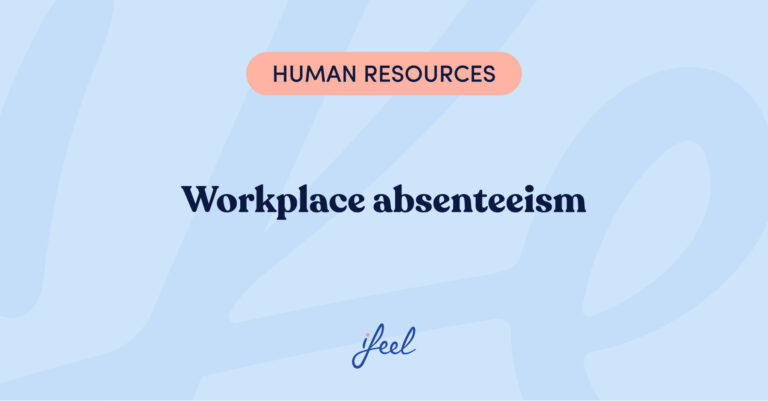Ergophobia refers to an extreme and crippling fear of work, which, if untreated, can become a serious occupational and health problem.
If we stop to think about it, we often hear people complain about work daily, which we tend to associate with laziness or a lack of motivation. However, conditions like ergophobia, which are important topics related to workplace health and employee well-being, go beyond the socially accepted listlessness.
So, what is ergophobia?
Ergophobia, or the pathological fear of one’s work, leads us to view our professional lives as a threat: either the workplace or a specific related task or a combination of both is capable of and causes the affected person a great deal of psychological discomfort.
Who has this phobia of their work? What makes them afraid of the company, their role, or the team with whom they work on projects together every day? When does this fear first appear, at what points do we experience it, and what consequences does it have on our professional development and life outside of work?

Ergophobia can become truly disabling, to the point that this condition prevents the affected individual from socializing, developing a normal professional career, and earning a living.
Although we speak of fear as the most characteristic emotion of ergophobia (as we do when referring to other phobias), this condition must be considered in a broader sense: extreme aversion, apprehension, nonspecific discomfort, and anguish would constitute some of its traits. One must remember that this is not an episode of slight discomfort or a bad day that happens to every one of us on occasion in our work lives. On the contrary, we are referring to an intense, frequent, and long-lasting pattern of a fear of work that generates great difficulties of varying levels in the affected person’s life.
What should be taken into account when dealing with ergophobia?
As with many other mental health conditions, particularly those related to anxiety disorders, a cognitive-behavioral approach to ergophobia is often reasonably practical to try to redirect the debilitating symptoms.
Of course, this must be done carefully, deeply, and progressively in therapy with a professional psychologist. However, as a starting point, in this article, we will talk about what is known as a “functional analysis” of ergophobia through the classic scheme of antecedents, characteristics of the condition, and finally, the consequences that may be contributing to its maintenance.
1. Identify the source of the problem
Attempt to detect remote causes of one’s ergophobia and more recent triggers. This part of the process includes constructing memories or even an actual “archive” within the person’s biography. The person should look at both their professional career and beyond: issues related to the education they received, life experiences unrelated to work, and the coping strategies they use for managing their triggers and their anxiety.
The aim is to understand when symptoms first began to appear, whether the individual associates their ergophobia with a particular type of work event or phase, or whether an isolated event that led to a clear and intense episode has occurred more recently.
2. Break down and define the problem descriptively
This step involves describing one’s ergophobia at the level of the emotional, cognitive, physical, and behavioral symptoms.
As with many other situations related to employee well-being, when discussing ergophobia, we risk perpetuating the idea that this condition manifests in the same way in all individuals who suffer from it.
It is clear that there are common characteristics; otherwise, we would not be writing an article on this subject. However, we must also remember that each person has different experiences and psychological mechanisms. Therefore, they should be the first to truly know about their condition, describe them, and even “quantify” them to the best of their ability, as this will be extremely useful during the treatment process.
3. Consequences of the problem
This step consists of identifying what happens once ergophobia manifests itself and what factors may contribute to maintaining the condition.
Faced with a condition like that of ergophobia, it is very likely that the person will opt for behavioral and experiential avoidance as a strategy to cope with their fear. For example, they may avoid situations that they know will expose them to something threatening (in this case, their job or some relevant aspect of it) or prevent any problem that they believe has the potential to be psychologically threatening.
This defense mechanism has an evident reinforcing effect on ergophobia: the person comes to avoid anything to reduce their sense of fear. This is one way the various avoidance strategies uphold the problem. By reducing the person’s exposure to the threatening situation, two other things also occur (in addition to the positive reinforcement of not exposing oneself to the fearful situation).

By not “confronting” the problem, the person reconfirms to themselves subconsciously that the situation is threatening, and by not exposing themselves to the threat, they do not train their capacity to tolerate and reduce the discomfort, nor do they acquire coping mechanisms that they can use in future situations that would keep them from avoiding work.
As already mentioned, a therapeutic approach to ergophobia takes time. Additionally, it is not limited to everything mentioned in this article. Affected individuals need to become aware of their existence of ergophobia and the extent of its consequences so that they can get into contact with a professional psychologist as soon as they can.
We hope you found this article about ergophobia interesting. If you would like more information about ifeel’s emotional well-being program for companies, get in touch, and we will contact your team as soon as possible.









